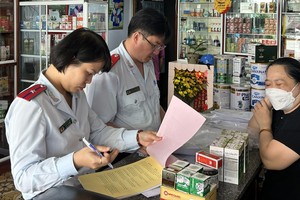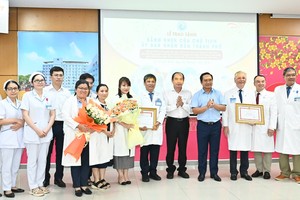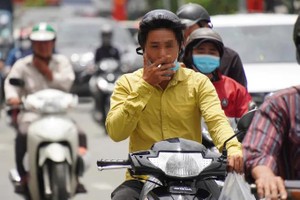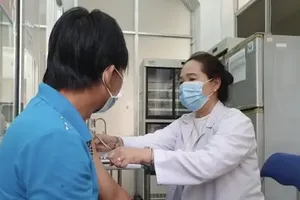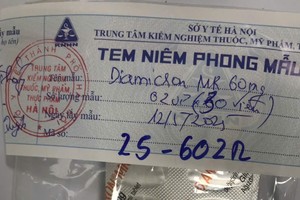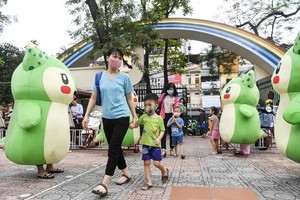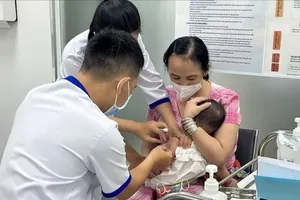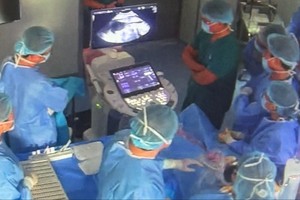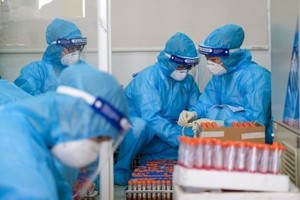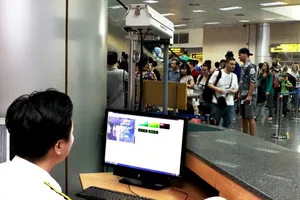
Deputy Director Hung on January 14 made the statement at a meeting to review 30 years of implementation of HIV/AIDS Prevention Task and opportunity to eliminate the disease in 2030 in the southern metropolitan.
Of the number , about 30 percent of patients living with HIV/ AIDS have high quantity of the deadly virus with high risk of transmitting the disease to others. This is one of big challenges for the present HIV/ AIDS Prevention Mission.
Since 1990 when the first HIV patient was discovered in Vietnam’s Ho Chi Minh City, the fight against HIV/AIDS in HCMC went through with difficulties. Specifically, from 1990 2000, the city has increased information of the disease in media to raise people’s awareness of the HIV epidemic with the aim to control its spread.
Moreover, city authorities have built models for prevention of HIV transmission. Subsequently, the city could reduce the rate of HIV-infected drug addicts from 42.3 percent in 1995 to 18.6 percent in 1998.
For the period from 2000 to 2010, these preventative models have been expanded citywide in addition to offer of antiretrovirals to help end the HIV epidemic which has facilitated expansion of treatment and prevention .
The city has so far set up 145 testing and consulting facilities for HIV patients as well as 24 medical centers with Methadone to treat 5,400 patients. Additionally, the program to take care people living with HIV and the preventative measure for Mother-to-Child Transmission of HIV have helped to reduce the number of HIV people.
From 2010 to 2020, the city has controlled the epidemic with various solutions including timely treatment after receiving test result, provision of ARV to infected people and PrEP (pre-exposure prophylaxis) medicine which people at risk for HIV take to prevent getting HIV from sex or injection drug use.
Till now, the city has achieved its targets of 90 percent of all people living with HIV will know their HIV status; 90 percent of all people with diagnosed HIV infection will receive sustained antiretroviral therapy; and 90 percent of all people receiving antiretroviral therapy will have viral suppression.
However, Doctor Hung stressed that one of the present challenges in the fight against HIV/AIDS is those with high social position who required high confidentiality of their person information at high risk.
In the coming time, in addition to existing measures implemented so far, the city will increase preventative measures and trace back infected to stop the spread of the disease in the community with the hope to end the epidemic by 2030. The city is striving to achieve the 95-95-95 target by 2025 and the 99-99-99 target by 2030, said Dr. Hung.
Highly valuing the city’s achievement during 30 years, Deputy Head of the Vietnam Administration of HIV/AIDS Control under the Ministry of Health Pham Duc Manh said the city’s achievement is a shining point in the calling for the participation of the entire machinery of state and the society in fighting against HIV/AIDS.
However, according to him, being a densely populated city in the country, HCMC has had to face challenges such as increase in HIV/AIDS-infected people in the community of gays and high new HIV infection rate each year.
Accordingly, the city should adopt better strategies for each person as well as mobilize social contribution of HIV-infected people so that these special people will become bridge to advise those living with HIV to accept treatment and those at high risk to access preventative services.
